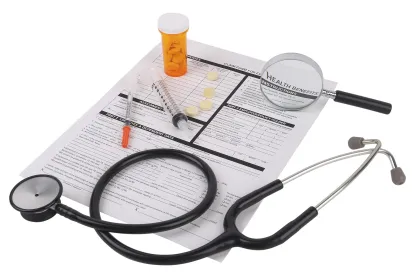On Jan. 22, 2016, CMS issued a new application and sweeping changes to the Medicare Electronic Health Records (EHR) Incentive Program hardship exception application process. The changes are intended to temporarily ease the burden on providers seeking exemption from the 2017 Medicare meaningful use payment adjustments. Highlights of CMS’ guidance include:
-
CMS may accept Medicare Meaningful Use Hardship Exception Applications for the 2015 EHR Reporting Period from EPs until March 15, 2016, and from qualifying hospitals until April 1, 2016.
-
While CMS has not stated it will issue blanket exemptions to EPs and hospitals who failed to attest to meaningful use in 2015, the language in Section 2.2.d. of the revised Hardship Exception Application leaves open the possibility that CMS will categorically grant exemptions to those applicants asserting Section 2.2.d as the reason for their failure to timely attest to meaningful use for the 2015 EHR Reporting Period.
-
Multiple providers may apply for a Hardship Exception as a group by submitting a single electronic application to CMS that includes each providers’ NPI and CCN.
-
CMS’ revised Hardship Exception Application requires less information from the applicant than the old application, permitting easier filing and processing.
The revised application and instructions, which are both accessible here, implement the Patient Access and Medicare Protection Act, Pub. L. No. 114-115 (Dec. 28, 2015) (PAMPA). PAMPA was passed in the last days of 2015 in the wake of provider frustration created by repeated revisions to the meaningful use criteria and CMS’ delayed release of the Stage 2 Meaningful Use Program Final Rule1 (Final Rule). CMS did not release the Final Rule until early October 2015. Consequently, eligible professionals (physicians and others subject to meaningful use as eligible professionals (EPs)) and qualifying hospitals were left with less than 90 days before year’s end to digest, implement, and attest to meeting the revised program’s criteria; yet, the Final Rule called for a 90 day data reporting period. Many EPs and hospitals also had trouble locating certified EHR technology updated for the new requirements in time to report data for the entire designated 2015 reporting period.
Easing the Burden
Recognizing the practical challenges generated by the Final Rule’s late issuance, CMS initially intended for EPs to apply for a hardship exemption from the 2017 penalty under the ‘extreme and uncontrollable circumstances’ category and the agency would review the applications on a case-by-case basis. This approach, however, was likely to result in millions of hardship applications. In response, Congress enacted PAMPA to grant CMS greater flexibility in granting hardship exceptions to providers for the 2015 EHR Reporting Period. Unfortunately, PAMPA’s language did not clearly delineate the scope of CMS’ discretionary authority to grant hardship exceptions. The new guidance and application help solidify the following changes to the 2015 hardship exception application process:
• Revised Hardship Exception Deadlines: PAMPA, by revising existing law found at 42 U.S.C. 1395w-4(a)(7)(B), revised the Meaningful Use Hardship Exception application deadlines for avoiding 2017 payment adjustments. Now, CMS may accept applications from EPs until March 15, 2016 and from qualifying hospitals until April 1, 2016. The list of EPs eligible to apply for the 2015 Hardship Exception can be found here. (Note: Under prior law, EPs could apply for a hardship exception until July 1, 2016. It appears that the revised guidance still permits EPs to submit hardship exception applications until July 1, 2016, but CMS will only grant them on a case-by-case basis after evaluating the individual applicant’s grounds for asserting a ‘significant hardship’, not on a categorical basis.
• Processing Applications: Until now, it was unclear if CMS was authorized to (1) batch process hardship applications for categories of EPs and hospitals and/or (2) issue a blanket exemption to all EPs and hospitals who failed to attest to meaningful use during the reporting period due to the late publication of the Stage 2 Final Rule. The revised guidance and application clarify two things:
-
Batch Processing: First, CMS interprets PAMPA to require it to process and grant hardship exceptions for ‘categories’ of EPs and hospitals on a streamlined basis, rather than, on a case-by case basis after considering the merits of each applicant’s claim of ‘hardship’, as it has historically processed hardship applications.2 While CMS has not stated it will issue blanket exemptions to EPs and hospitals who failed to attest to meaningful use in 2015, the language in Section 2.2.d. leaves open the possibility for a blanket exemption to applicants asserting Section 2.2.d as the reason for their failure to timely attest to meaningful use. Section 2.2.d. permits an exemption from Medicare payment adjustments on the grounds that the provider “faced extreme and uncontrollable circumstances in the form of issues with certification of the EHR product or products such as delays or decertification, issues with implementation of the CEHRT such as switching products, or issues related to insufficient time to make changes to the CEHRT to meet CMS regulatory requirements for reporting in 2015.”
-
Group Processing: Second, the instructions for CMS’ revised hardship application state that multiple providers and provider types now may apply for an exception as a group, using a single electronic application that includes each providers’ NPI and CCN.3
• Streamlined Application: CMS’ revised application requires less information from the applicant than the old applications, permitting easier filing and processing. The group application approach also reduces the provider’s filing obligations and related administrative burdens.
1 80 Fed. Reg. 62762 (Oct. 16, 2015).
2 see here
3 See CMS Announcement (January, 22 2016) available at ; see also





 />i
/>i

